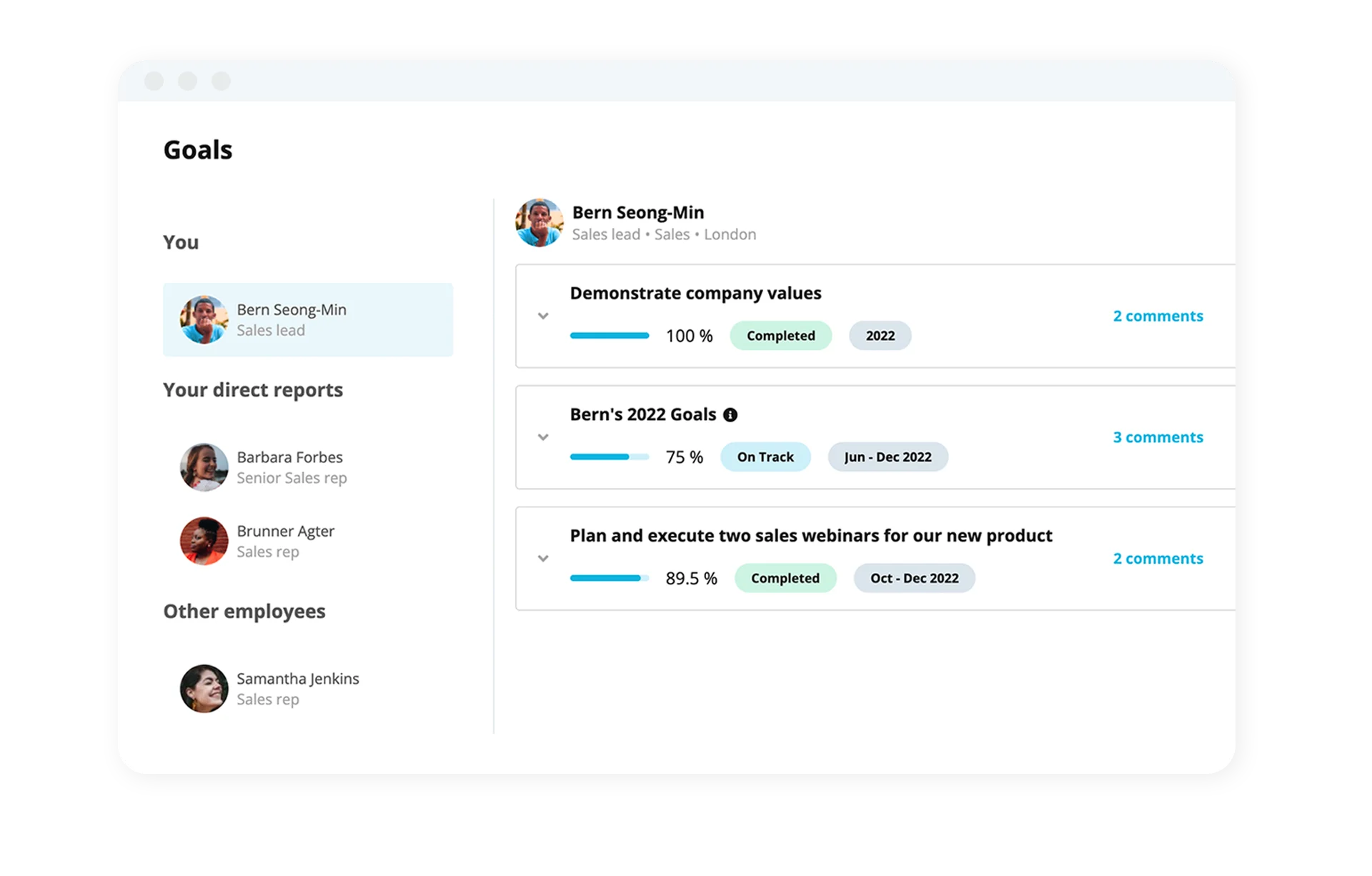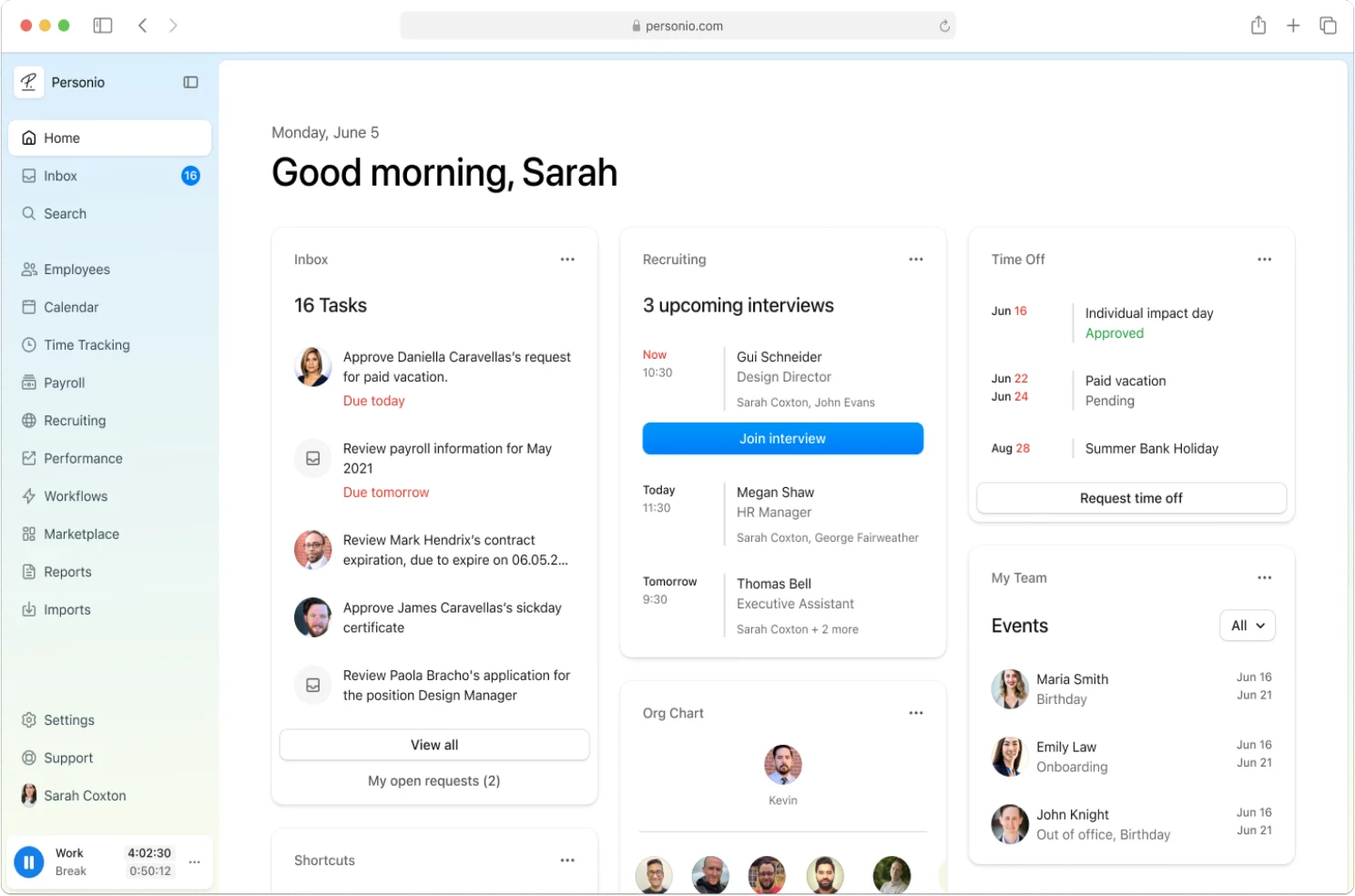30-60-90 Day Plan Guide & Template for New Employees
Starting a new job can be overwhelming for an employee. There are a lot of new people to meet, and a lot to learn about the company’s structure, culture and internal processes.
One way to boost your chances of success as a new employee is to put together a 30-60-90 day plan to act as a road map for your first few months with the organisation. And as HR professionals, mandating that each new employee creates such a plan can help you to effectively onboard new hires and get them up to productivity as soon as possible.
In this article, we’ll explain what a 30-60-90 day plan is, discuss the elements that are typically included in a 30-60-90-day plan, and provide our tips and a useful template to help you create your own.
Streamline your onboarding with our free checklist.Contents
- 1What Is a 30-60-90 Day Plan?
- 2What Is Included In a 30-60-90 Day Plan?
- 3Why You Should Create a 30-60-90 Day Plan When Onboarding New Employees
- 4Five Tips to Help You Create an Effective 30-60-90 Day Plan
- 530-60-90 Day Plan Template for New Employees
- 6FAQS about the 30-60-90 Day Plan
- 7Simplify Onboarding and HR Tasks With Personio
What Is a 30-60-90 Day Plan?
A 30-60-90 day plan is a document that outlines a new employee’s goals for their first three months with an organisation, and the steps they’ll take to achieve them. The goals should be measurable and broken down into manageable milestones related to the employee’s role.
Organisations can use 30-60-90 day plans as the basis for a solid employee onboarding process, helping to set expectations for new employees and guide them through their first months with the company.
What Is Included In a 30-60-90 Day Plan?
At its most basic level, a 30-60-90 day plan should include the new employee’s goals for each of their first three months, and the actions they need to take to achieve them. Goals should be tied to measurable metrics that help newly hired employees and their managers to understand whether they have been successful.
This means breaking down your 30-60-90 day plan into the following three elements:
Goals: A 30-60-90 day plan should help employees to understand the goals they’ll be focusing on each month. For example, in the first month, the employee’s main goal might be to understand the organisation’s internal structures and processes.
Actions: You should also include the actual steps that the employee will need to take in order to meet their goals each month. In an employee’s first month, actions might include attending training and orientation sessions, reading onboarding documents and scheduling introductions with each of their immediate colleagues.
Metrics: Without concrete, measurable metrics of success, there’s no way for an employee or their manager to understand whether they have met their goals, so you should always include these in a 30-60-90 day plan. In the first month, this might mean scoring above 80% in a skills test based on training the employee has completed.
Why You Should Create a 30-60-90 Day Plan When Onboarding New Employees
An SHRM study revealed that employees were 58% more likely to remain with an organisation for at least three years when they had gone through a structured onboarding process — and a 30-60-90 day plan can play an important role in this.
A 30-60-90 day plan breaks the onboarding process down into manageable steps and helps employees to understand what is expected of them. Not only does this give them an easy way of measuring the progress they’ve made, but it also shows them how their role connects to the company’s overall strategy.
This gives the employee a sense of purpose, which can also play a part in employee retention: a recent study found that having purpose at work can triple an employee’s intention to stay with the company.
Five Tips to Help You Create an Effective 30-60-90 Day Plan
If you want to help your new hires to get up to speed and on board with the company culture as quickly as possible, a 30-60-90 day plan can help. Here are five steps that you and your new employees can take to create an effective 30-60-90 day plan:
1. Provide a Template
Creating a 30-60-90 day plan can be an overwhelming task in itself for a new employee, so you might want to provide a template to help them. This breaks the process down and shows them what a 30-60-90 day plan should look like.
It also provides consistency across the organisation as each new employee’s 30-60-90 day plan will follow the same structure. We’ve provided a template for a basic 30-60-90 day plan that you could use below.
2. Set SMART Goals
To make sure the goals you choose to include in your 30-60-90 day plan are appropriate and useful, consider using SMART goals. SMART goals are:
Specific
Measurable
Attainable
Realistic
Time-Bound
For example, rather than a generic goal such as creating posts for the company blog, a SMART goal might be to create and publish two 1500–2000 word, SEO-optimised blog posts by the end of the first month.
3. List Action Items
You also need to include the actual actions that new employees need to take to achieve their goals. Breaking each goal down into manageable actions helps to avoid overwhelming new staff members. And creating a template that allows them to check off items as they complete them provides a sense of accomplishment for the employee.
4. Remember to Prioritise
Not all goals are created equal, and it’s important that employees understand which tasks and achievements are most important so they can focus on them if they’re short on time.
You might want to consider including one core goal or focus for each month, with additional goals listed underneath. This way, the employee will be able to prioritise working towards the most important goal and move on to the others when they have time.
5. Be Flexible and Reassess at Key Milestones
Even when you’ve put time and effort into creating the perfect 30-60-90 day plan, circumstances can change. It’s important to be flexible as you or your employees move through the first months in a new role, and adjust the plan if necessary.
It’s a good idea to schedule meetings around the 30 and 60-day marks to revisit the plan with the employee and make sure it still makes sense. If the employee hasn’t yet achieved a goal from the previous month, they can’t move forward — so you might have to revise the plan to make it more achievable. Organising these check-ins also gives new employees the opportunity to ask questions about their performance so far and how they can improve.
30-60-90 Day Plan Template for New Employees
Still need help putting together your 30-60-90 day plan? Here’s a basic template that you can use to get started:
| 30 Days | 60 Days | 90 Days |
Goals | [Goal #1] [Goal #2] [Goal #3] | [Goal #1] [Goal #2] [Goal #3] | [Goal #1] [Goal #2] [Goal #3] |
Actions | [Action #1] [Action #2] [Action #3] | [Action #1] [Action #2] [Action #3] | [Action #1] [Action #2] [Action #3] |
Metrics for Success | [Metric #1] [Metric #2] [Metric #3] | [Metric #1] [Metric #2] [Metric #3] | [Metric #1] [Metric #2] [Metric #3] |
FAQS about the 30-60-90 Day Plan
Here are the answers to some FAQs about 30-60-90 day plans:
When Should You Make a 30-60-90 Day Plan?
A 30-60-90 day plan is usually used at the beginning of an employee’s time with a company. They are often created during the onboarding process to help to give new employees a focus and an idea of the goals they need to achieve during their first few months.
In some cases, organisations ask candidates to create a 30-60-90 day plan as part of the hiring process. This gives hiring managers an idea as to whether the candidate fully understands the role and is prepared to take it on.
While a 30-60-90 day plan created during the interview process is always going to need some adjusting to match the actual expectations of the company, it can help candidates to prepare and ensure they’re ready to get started if they’re successful in securing the role.
What Are the Benefits of a 30-60-90 Day Plan?
Creating a 30-60-90 day plan comes with many benefits for new employees and the organisations they’re joining. For example, a 30-60-90 day plan:
Shows employees where to focus
Helps them keep track of their goals and progress
Sets clear expectations for new hires
Encourages self-review of accomplishments
Allows employees to self-manage and work autonomously
Helps optimise productivity for new employees
Simplify Onboarding and HR Tasks With Personio
Helping new employees to create a 30-60-90 day plan is just one part of a full onboarding process — which can mean a lot of work for HR and hiring managers.
With Personio, you can simplify the onboarding process by providing new employees with all the info they need in one place: their digital employee file. You can also view and create onboarding tasks in one central location and assign them to the right people — they’ll receive automated reminders when they need to complete a task.
Personio ensures your new employees feel right at home from day one and gives them everything they need to hit the ground running. Ready to test it out? Sign up for a no-strings-attached 14-day free trial.

